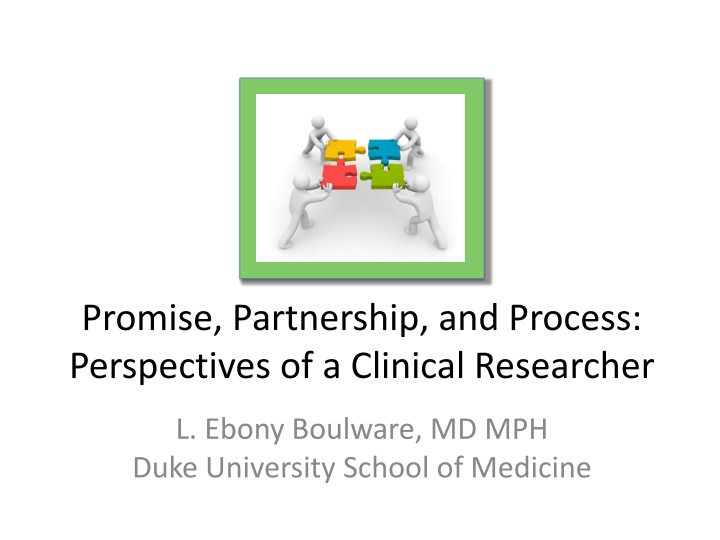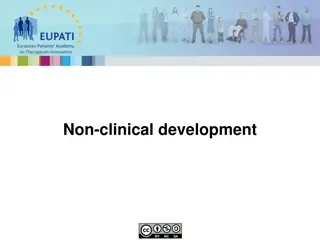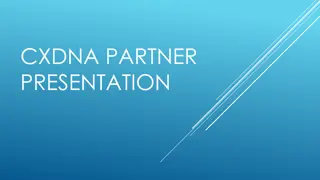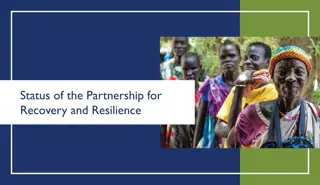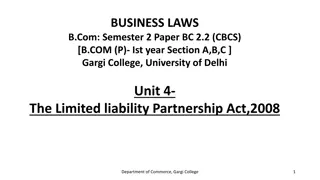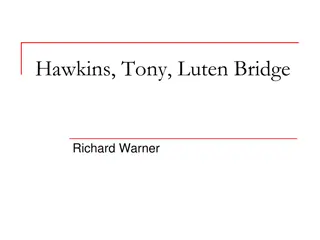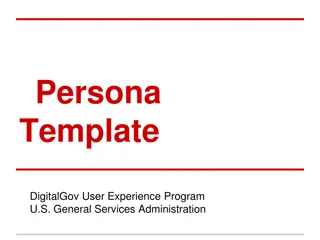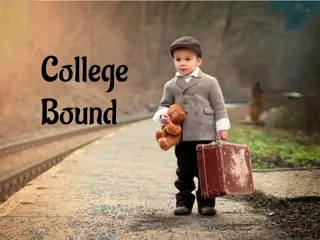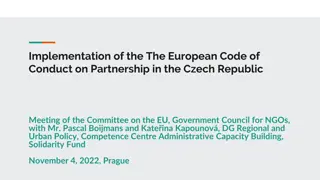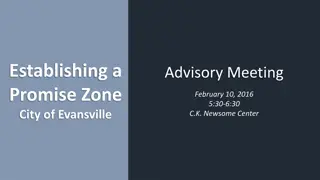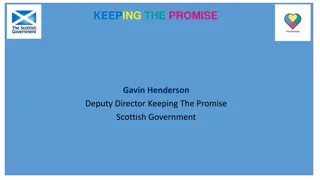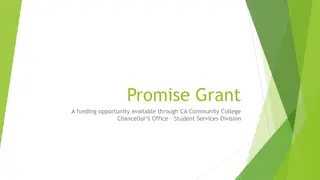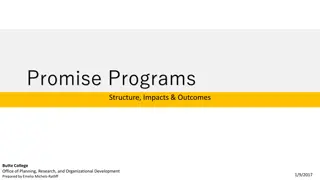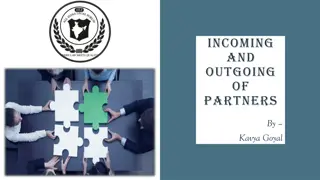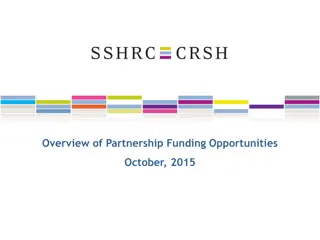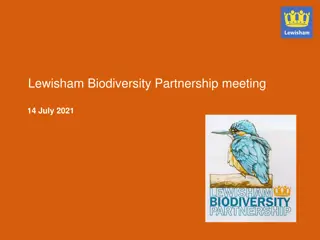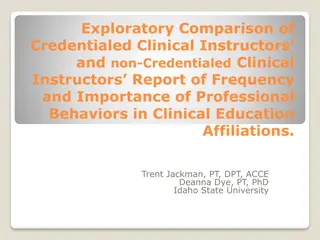Perspectives of a Clinical Researcher: Promise, Partnership, and Process
Clinical researcher L. Ebony Boulware shares insights on Community-Engaged Research (CEnR), emphasizing the core features, types of partnerships, illustrative process examples, challenges, and key questions. The partnership principles and implications for the research process are highlighted, emphasizing transparency, trustworthiness, stakeholder inclusion, and collaborative planning.
Download Presentation

Please find below an Image/Link to download the presentation.
The content on the website is provided AS IS for your information and personal use only. It may not be sold, licensed, or shared on other websites without obtaining consent from the author.If you encounter any issues during the download, it is possible that the publisher has removed the file from their server.
You are allowed to download the files provided on this website for personal or commercial use, subject to the condition that they are used lawfully. All files are the property of their respective owners.
The content on the website is provided AS IS for your information and personal use only. It may not be sold, licensed, or shared on other websites without obtaining consent from the author.
E N D
Presentation Transcript
Promise, Partnership, and Process: Perspectives of a Clinical Researcher L. Ebony Boulware, MD MPH Duke University School of Medicine
Overview Core features and promise of CEnR Types of partnerships engaged Illustrative example of process Challenges Next frontier and key questions
Community Engaged Research Features Partnerships between researchers and community organizations Recognizes the strengths of community and individuals and builds on those strengths Guided by principles of transparency, equity, respect, fairness Minkler M. Community-based research partnerships: challenges and opportunities. J Urban Health. 2005 PMID: 15888635 Michener L, Cook J, Ahmed SM, Yonas MA, Coyne-Beasley T, Aguilar-Gaxiola S. Aligning the goals of community-engaged research: why and how academic health centers can successfully engage with communities to improve health. Acad Med. 2012 PMID: 22373619
Promise of Community Engaged Research? Transparent and trustworthy research Greater inclusion of and ownership in research by key stakeholders Enhanced research relevance and scope Greater impact Improved possibility for sustained uptake and lasting effects
Who are the Partners? Individuals and families Non-Profit Organizations Faith community Business Arts Public Health, other Government Sectors Safety net health and private health care delivery
Partnership Principles Jointly develop ideas and plans with inclusion and input from all partners from the beginning Evolve plans and modify them collaboratively Ensure all partners are engaged, feel valued, and perceive a return on investment Share in the direct (e.g., monetary) and less direct benefits (e.g. contribution to health and society) of conducting studies Foster longitudinal and trusting relationships that extend research through a single or multiple cycles of funding
Implications for Process? Research themes ideally attend to established community needs ( pre-work ) Ideas shared by multiple stakeholders All stakeholders regarded as experts in their domains and valued for expertise Ideas need TIME to solidify and are often iterated repeatedly (sometimes over years)
Example: Tailoring Interventions in the Achieving Blood Pressure Control Together (ACT) Study* Overall Goal: Study effectiveness and sustainability of interventions to improve hypertension control among urban African Americans in a community-based clinic *P50 HL0105187 Hopkins Center to Eliminate Cardiovascular Health Disparities
ACT Study Overview Planning Phase: Integrate principles of implementation science and CBPR to enhance established interventions' cultural sensitivity, implementation, and sustainability Built on years of community relationships and partnerships in Baltimore, MD Assessment Phase: Randomized controlled effectiveness trial to study intervention effect on blood pressure control
Originally Proposed Intervention Bundled Intervention Community Health Worker and BPM* Communications Training Self-management Training Random Allocation Usual Care *Home Blood Pressure Monitor
Community and Stakeholder Engagement led to Several Intervention Adaptations Increased emphasis on connecting patients to community resources Increased emphasis on meeting patient and family needs Emphasizing positive community attributes and individual patient strengths Focus on health literacy
Proposed Bundled Intervention Community Health Worker and BPM* Communications Training Self-management Training Random Allocation Usual Care Community Health Worker and BPM Revised Community Health Worker and BPM Plus Communications Training Random Allocation Community Health Worker and BPM Plus Self-management Training *Home Blood Pressure Monitor
Process? Estimated Resources for Planning Phase 84 official meetings over 2-year period, resulting in 91 hours of direct time invested Additional time spent preparing for meetings, travel, analysis, and informal conversations Ameling JM, Ephraim PL, Bone LR, Levine DM, Roter DL, Wolff JL, Hill-Briggs F, Fitzpatrick SL, Noronha GJ, Fagan PJ, Lewis-Boyer L, Hickman D, Simmons M, Purnell L, Fisher A, Cooper LA, Aboutamar HJ, Albert MC, Flynn SJ, Boulware LE. Adapting Hypertension Self-Management Interventions to Enhance their Sustained Effectiveness among Urban African Americans. Family and Community Health. 2014 Apr-Jun;37(2):119-33. PMID: 24569158
Planning Phase Meetings 8 Community Advisory Board meetings 38 study investigator meetings 7 meetings with community-based CHW consultant 14 meetings with CHW working group 7 meetings with graphic artist and community members 5 meetings with patients and families 8 meetings with practice staff 3 meetings with leaders from other clinic programs 3 meetings with healthcare payer stakeholders
Lessons Learned Partnered input enhanced study relevance tremendously but involved risks with changing design Substantial time and resource investment Engagement rewarding and positive Process improved potential for relevant and impactful study findings Ameling JM, Ephraim PL, Bone LR, Levine DM, Roter DL, Wolff JL, Hill-Briggs F, Fitzpatrick SL, Noronha GJ, Fagan PJ, Lewis-Boyer L, Hickman D, Simmons M, Purnell L, Fisher A, Cooper LA, Aboutamar HJ, Albert MC, Flynn SJ, Boulware LE. Adapting Hypertension Self-Management Interventions to Enhance their Sustained Effectiveness among Urban African Americans. Family and Community Health. 2014 Apr-Jun;37(2):119-33. PMID: 24569158
What are the Challenges? Time and resources Experience Trust Researcher and community readiness Infrastructure and coordination Ensuring community perceives a return on investment
4 questions for the next frontier 1. How do we build (and maintain the resilience of) enduring partnerships and platforms to extend beyond individual investigators, projects, or programs? 2. What resources and revisions to traditional funding mechanisms are needed to fully realize the promise of CEnR?
4 questions for the next frontier 3. What are the best mechanisms to build enhanced community and researcher engagement capacity? Training? Team based mentoring to build pipeline of partners (community and academic)? Longitudinal mentoring opportunities? 4. How do we tackle the sustainability problem?
Conclusions CEnR is a specialized approach to rigorous science and critical to translating scientific discoveries into real-world health benefits Partnerships and processes require different thinking with regard to the planning, funding, and infrastructure required for success Several exciting opportunities to develop new methods to move the field forward
